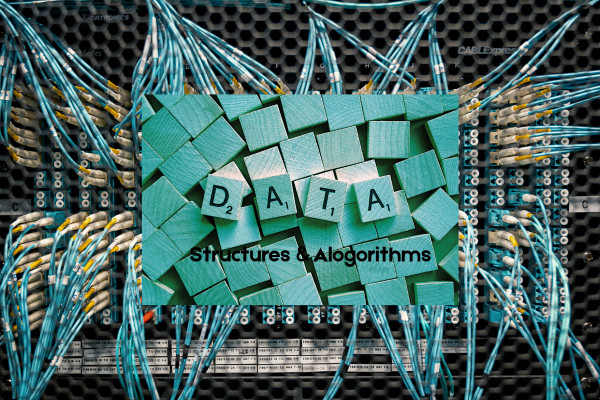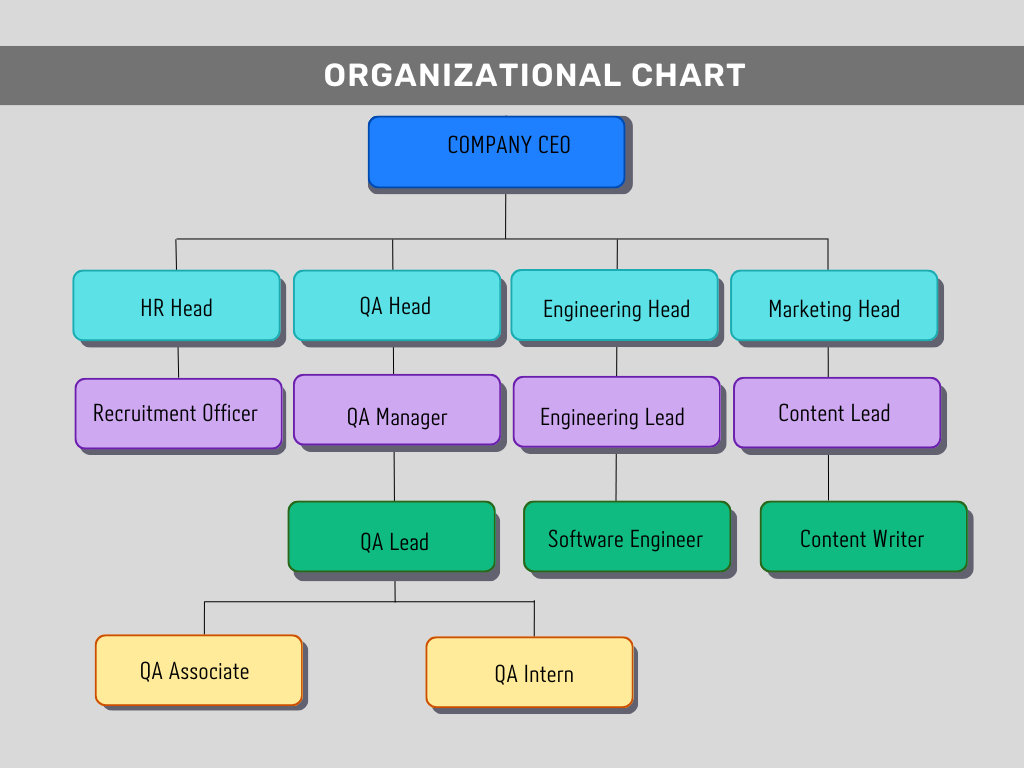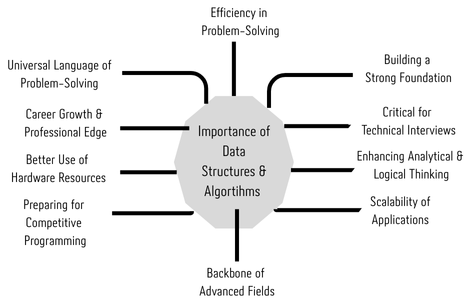Why Learning Data Structures and Algorithms (DSA) is Essential for Developers
|
|
Software development is the backbone of innovation across industries. In this technology-driven world, from artificial intelligence (AI) and machine learning (ML) to mobile apps and enterprise solutions, every software component relies on efficient and scalable code. At the heart of writing such code is Data Structures and Algorithms (DSA).
| Key Takeaways: |
|---|
|
This article explores the importance of DSA, its real-world applications, and why mastering it is crucial for anyone in the software field.
What are Data Structures and Algorithms?
DSA is the building block of software development. It is not limited to any one programming language and can be used in any language. Developers can build efficient solutions using DSA, keeping time and space complexity in check. If anyone is looking for a software development career, DSA is one of the first skills they should master.

Before understanding their importance, let’s break down the terms, Data Structures, and Algorithms:
Data Structures
Data structure is defined as an organized collection of data that helps a program with rapid and efficient data access so that the entire program can function in an efficient manner.
In the programming world, data is at the center and everything revolves around data. There are various operations that are to be performed on data such as searching, sorting, organizing, formatting, storing, and accessing data. Only when all these operations are performed successfully and efficiently can a program succeed. This structuring and organizing of program data is done using a data structure. They come in various forms, such as arrays, linked lists, stacks, trees, graphs, and hash tables.
Consider the following organizational chart.

If you want to store data about people who are part of the organization, you should use an appropriate data structure like a tree. This is because you have all the information that you can represent in a tree. If you choose a list to represent the above data, it may not be feasible. Hence, as a programmer, you should first check and decide the data structure that will best represent the given data.
So how do you decide which data structure is the best?
The best data structure will be the one that makes organization of data, and the operations on it easier. It should also be able to store the given data efficiently so that access is not problematic. A data structure helps manage and organize data, reduce complexity, and increase efficiency. It is possible to manage large data sets efficiently for uses such as large databases and internet indexing services.
In computer science, there are two different kinds of data structures:
- Linear Data Structures: In linear data structures, elements are arranged sequentially, one after the other. Each element has a predecessor and a successor (except for the first and last elements) in sequential arrangement. Examples: Arrays, Linked Lists, Stacks, and Queues.
- Non-Linear Data Structures: In non-linear data structures, elements are not arranged sequentially. In this type of data structure, elements are interconnected in a non-sequential manner, and one element can be connected to multiple other elements. The organizational chart shown above is an example of a non-linear data structure. Examples: Trees, Graphs, Hash Tables, and Heaps.
Algorithms
An algorithm is defined as a step-by-step procedure or set of rules to solve a particular problem or perform a task.
In computer science, these stepwise instructions are written in a programming language. Algorithms operate on data stored in data structures. So, if you continue with the above organizational chart, you can have an algorithm to retrieve the names of all departments that are under the CEO or employees who report to the QA Lead. Yet another algorithm can be to add more employees to the chart or delete an employee from the chart when an employee resigns.
Any operation performed on a data structure is a set of rules or algorithms that achieve a particular goal. Some of the classic examples include searching (binary search), sorting (merge sort, quick sort), and graph traversal (BFS, DFS). Algorithms are fundamental to computer programming, and an efficient algorithm can help programmers find the solution and transform a slow program into a faster one.
In computer science, data structures represent how data is stored, while algorithms define how that data is processed.
Data Structures and Algorithms
Data structures and algorithms (DSA) go hand in hand. If you cannot search through a data structure or add/delete data in a data structure, then it is not worth much. Similarly, an algorithm will merely be a set of rules if it cannot operate on data or if there is no data to operate on. DSA deals with finding efficient ways to store and retrieve data, perform various operations on data, and to solve specific problems to achieve a goal of the program.
By understanding DSA, programmers:
- Decide and choose the best data structure or algorithm for a given situation.
- Develop programs that run faster or use less memory.
- Understand how to solve complex problems in a systematic way.
The Importance of DSA
The following are the primary reasons why DSA is important to learn:

1. Efficiency in Problem-Solving
Modern software applications handle huge amounts of data and require real-time responses. If these applications have to work efficiently without taking up too much storage or time, they need the right data structures to organize the data and efficient algorithms to operate on the data. Failing to do so will render the application sluggish or even unusable. For example,
- Searching through a bank database with millions of entries using linear search would take far too long; a binary search on sorted data is exponentially faster.
- A poorly designed algorithm might take hours to process information for a new account, while an optimized one solves the same task in seconds.
When programmers learn DSA and gain detailed knowledge about data structures and algorithms, they can design solutions that are not just correct but also efficient.
2. Building a Strong Foundation
Programming languages are continuously evolving, and every day you find new frameworks, libraries, and syntaxes emerging in the market. However, the basic concept of DSA remains the same and is timeless. Mastering DSA provides a strong foundation for programmers, and they can build efficient solutions using any programming language. For instance:
- A stack works the same way whether you’re coding in Python, Java, C++, or Go.
- Sorting algorithms like quicksort have universal steps, even though implementation syntax may differ.
Thus, the DSA knowledge provides a strong foundation to developers so that they can adapt to new technologies with confidence.
3. Critical for Coding Interviews
Major technology companies like Google, Microsoft, and Amazon design their hiring processes around problem-solving using DSA. One of the most practical reasons to learn DSA is its role in coding interviews. Major tech companies such as Google, Microsoft, Amazon, and Meta, as well as smaller ones, design their hiring processes around problem-solving using DSA.
- The first round of technical interviews often revolves around data structures (e.g., “Implement a queue using stacks”) or algorithms (e.g., “Find the shortest path in a graph”).
- These tests are conducted to evaluate a candidate’s analytical ability, logical reasoning, and optimization skills and not syntactic knowledge.
Whether you are a fresher or an experienced professional, without DSA knowledge, cracking these interviews becomes nearly impossible.
4. Enhancing Analytical and Logical Thinking
Mastering DSA improves one’s thought process. It trains the brain to:
- Break down complex problems into smaller, manageable subproblems.
- Analyze trade-offs between different algorithms.
- Gain knowledge about time complexity (how fast an algorithm runs) and space complexity (how much memory it uses).
All these skills extend beyond programming, shaping how individuals approach real-life problem-solving.
5. Scalability of Applications
Scalability is a critical factor that decides how successful the application is. Poorly designed applications might work properly for 500 users, but fail when users reach the 1 million mark, indicating the application is not scalable. DSA enhances developers’ ability to build scalable solutions. For example:
- Using a hash table for fast lookups rather than repeatedly scanning a sequential list.
- Choosing graph algorithms to optimize navigation routes in mapping applications.
Scalability ensures software remains functional as user demand increases.
6. Backbone of Advanced Fields
DSA is the foundation of advanced computer science domains like:
- Artificial Intelligence & Machine Learning: These fields deal with large datasets and efficient algorithms that process these large datasets in reasonable timeframes.
- Cybersecurity: Cryptographic algorithms protect sensitive information that is passed over the network.
- Operating Systems: Functions like memory management, process scheduling, and file systems are all implemented using DSA concepts.
- Networking: Routing algorithms to determine optimal paths for data transfer use DSA concepts.
So, DSA is not just about cracking interviews or passing competitive exams. Without DSA, these advanced fields would not exist in their current form.
7. Preparing for Competitive Programming
The software field conducts various competitive programming contests like ACM ICPC, Google Code Jam, and Codeforces. These are arenas where DSA knowledge shines. Problems in these contests require:
- Quick thinking under limited timeframes.
- Detailed understanding of dynamic programming, greedy methods, and graph traversal algorithms.
These contests sharpen coding skills and open career opportunities for professionals.
8. Better Use of Hardware Resources
Though computers are powerful, their hardware resources, like memory and processing power, are limited. Efficient algorithms and organized data make optimal use of these resources. For instance:
- A program that reduces execution time from O(n²) to O(n log n) could save hours of CPU time when it has significant inputs.
- Optimized memory management ensures applications run smoothly without crashing, and memory is not wasted.
DSA helps programmers write resource-efficient code as they know which data structures and algorithms will give optimal output.
9. Career Growth and Professional Edge
Professionals who can design efficient, scalable, and reliable applications are more valued by employers. This is one of the reasons why most of the interview process consists of testing DSA knowledge. Professionals with DSA skills:
- Stand out in job applications.
- Can handle complex technical challenges.
- Lead projects involving large-scale data processing or system optimization.
DSA is a career accelerator that makes great programmers stand out.
10. Universal Language of Problem-Solving
DSA is a universal language among programmers. Regardless of location, background, or culture, developers collaborate more easily when they share a common understanding of data structures and algorithms. This encourages universal collaboration and teamwork.
Real-World Applications of DSA
The following table summarizes the main applications of DSA:
| Applications of DSA | Details |
|---|---|
| Search Engines (Google, Bing) | Search engines use advanced algorithms for ranking, indexing, and retrieving search results in milliseconds. |
| Social Media Platforms (Facebook, Twitter) | Graph algorithms power friend recommendations and content feeds in social media. |
| E-commerce Websites (Amazon, Flipkart) | Sorting and searching algorithms recommend products and manage inventory in e-commerce portals. |
| Navigation Apps (Google Maps, Waze) | Graph algorithms determine the shortest or fastest route from source to destination. |
| Databases | Trees, hashing, and indexing structures allow fast data retrieval. |
| Gaming | Pathfinding algorithms (like A*) enable intelligent NPC movement in gaming. |
How to Approach Learning DSA
Learning DSA effectively is an important step to understanding its importance and developing efficient applications. Here’s a roadmap to the DSA learning approach:
- Start with Basics: Start with basics and learn the simple data structures like arrays, linked lists, stacks, and queues. Practice simple searching and sorting algorithms.
- Master Recursion: Recursion (a function that calls itself till a condition is met) is the backbone of many advanced algorithms, including tree traversals and divide-and-conquer strategies.
- Move to Advanced Structures: Once your basics are strong enough, study trees, graphs, hash tables, and heaps. These structures are mostly used in real-world systems.
- Analyze Complexity: Understand the concept of complexity and learn Big-O notation thoroughly. With complex knowledge, you can compare solutions objectively.
- Practice Consistently: Use platforms like HackerRank to practice DSA problems and increase your practical knowledge.
- Learn Advanced Algorithms: Explore advanced DSA concepts such as greedy algorithms, dynamic programming, and backtracking for solving complex problems.
- Apply to Projects: Apply your DSA knowledge to real-world applications like building a scheduler prototype or an e-commerce application.
Challenges DSA Learners Face
Beginners learning DSA face several challenges:
- The DSA concepts are abstract and theoretical.
- Progress in DSA requires patience and consistent practice.
- Transitioning from simple syntax coding to logical problem-solving can feel intimidating.
Overcoming these challenges may be difficult unless the professional is persistent and focused on long-term benefits rather than short-term frustrations.
Conclusion
DSA are not merely academic subjects, they are the essence of software programming. It empowers developers to solve complex problems efficiently, build scalable solutions, and excel in their careers.
As technology evolves rapidly, and new tools and frameworks hit the market, DSA is one thing that has remained timeless. It is a bridge between abstract thinking and real-world solutions. It is one of the most important areas to master in computer science.
Whether you are a student preparing for interviews, a curious learner, or a professional, investing time in DSA surely pays lifelong dividends.
